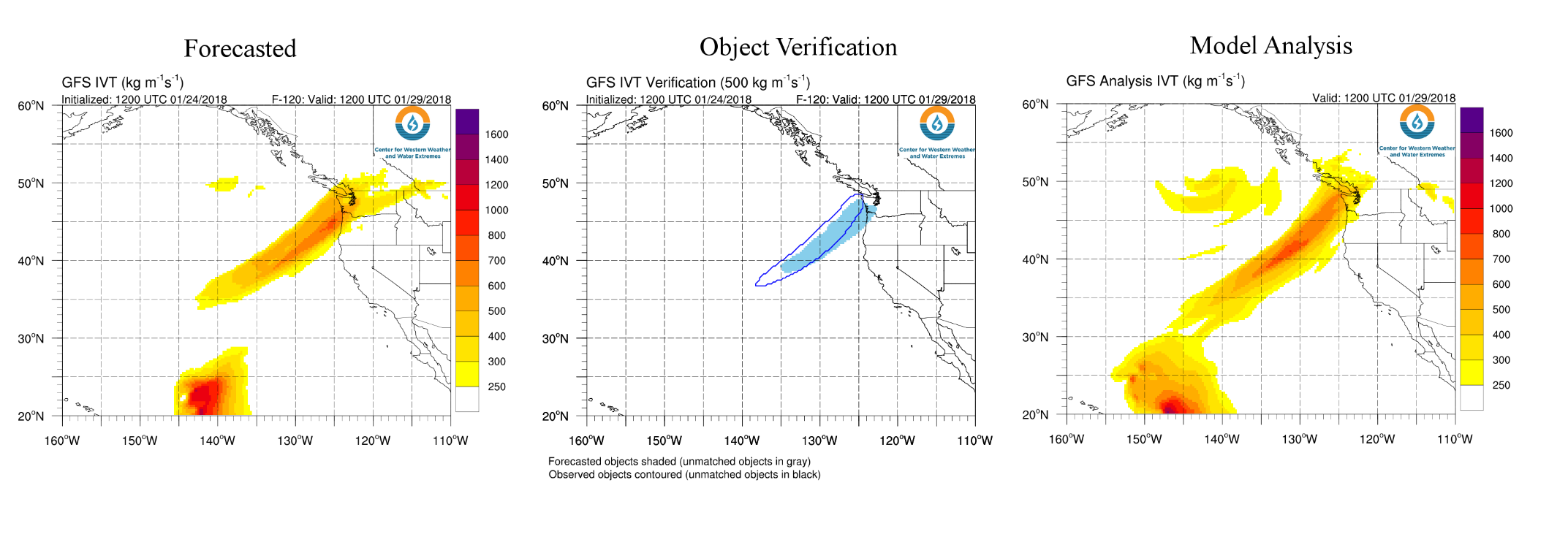CW3E Launches Near Real-Time AR and QPF Forecast Verification Website
February 13, 2018
CW3E has developed a new suite of tools designed to quickly evaluate the performance of forecasts for the U.S. West Coast. Tools are now available to verify forecasts of precipitation and integrated vapor transport (IVT), a proxy for atmospheric rivers. The verification method is based upon identifying contiguous regions, called objects, in the forecast that meet the requirements for an impactful precipitation or atmospheric river event. For example, in the below Figure, the forecasted AR (blue shading) is an IVT object (proxy for AR) because it exceeds the threshold 500 kg m-1 s-1 and has geometry consistent with an atmospheric river. The blue shaded forecast IVT object has a location, size and other characteristics that can be compared to an analysis object (blue outline) at the matching forecast valid time. To visualize this process, see the overlap of the two objects in the Figure’s middle panel. On the CW3E website, users may choose to examine precipitation and IVT fields for the previous week; choose one of several forecast sources – including several well-known numerical models; choose a range of forecast lead times; and choose one of several object thresholds. For IVT objects that exceed 500 kg m-1 s-1, additional statistics are provided. The tools are designed to inform operational stakeholders of model performance for key precipitation events and atmospheric river landfalls.
The new verification website is created using NCARs Method for Object-Based Diagnostic Evaluation (MODE) software. These tools were developed by Laurel DeHaan, Andrew Martin, Rachel Weihs, Brian Kawzenuk and Chad Hecht of CW3E and David Reynolds of CIRES. They can be accessed from the CW3E forecast verification webpage. A more complete explanation of the verification and the methodology is provided on the website.
Additional forecast verification tools are in development at CW3E and will be posted to the website as they become available.

(Left) Forecasted IVT from the NCEP GFS, initialized 1200 UTC 24 January 2018 and valid 1200 UTC 29 January 2018.
(Middle) Forecasted (shading) and observed (contour) IVT objects identified by MODE using a 500 kg m-1 s-1 threshold.
(Right) GFS analysis (0-hr forecast) IVT valid 1200 UTC 29 January 2018.
